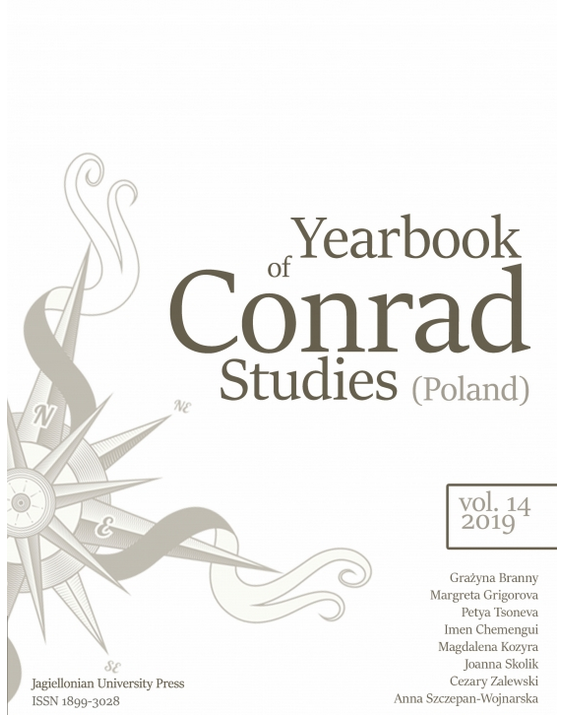WHAT “A SMILE OF FORTUNE” HAS TO HIDE: AN INTERTEXTUAL AND COMPARATIVE RECONSIDERATION OF THE TEXTURE AND THEME OF CONRAD’S TALE
WHAT “A SMILE OF FORTUNE” HAS TO HIDE: AN INTERTEXTUAL AND COMPARATIVE RECONSIDERATION OF THE TEXTURE AND THEME OF CONRAD’S TALE
Author(s): Grażyna Maria Teresa BrannySubject(s): Comparative Study of Literature, Polish Literature, Theory of Literature, British Literature
Published by: Wydawnictwo Uniwersytetu Jagiellońskiego
Keywords: Joseph Conrad; “A Smile of Fortune”; denegation; intertextuality; comparison; incest;
Summary/Abstract: The present article is part of a larger project on Conrad’s less known short fiction, the area of his writing which is largely undervalued, and even deprecated at times. The paper’s aim is to enhance the appreciation of “A Smile of Fortune,” by drawing attention to its “inner texture” as representative of Conrad’s “art of expression,” especially in view of the writer’s own belief in the supremacy of form over content as well as “suggestiveness” over “explicitness” in his fiction. To achieve this aim a New Critical (“close reading”), intertextual and comparative approaches to Conrad’s story have been adopted, involving nineteenth- and twentieth-century American literary texts, i.e., both those preceding and those following the publication of Conrad’s ’Twixt Land and Sea (1912) volume featuring the tale in question. The intertextual reading of “A Smile of Fortune” against Bernard Malamud’s short story “The Magic Barrel,” Herman Melville’s Moby Dick, and William Faulkner’s Absalom, Absalom!, with Light in August as a point of reference, reveals the workings in Conrad’s story of the modernist device of denegation, which, alongside antithesis and oxymoron, seems to be largely responsible for the tale’s contradictions and ambiguities, which should thus be perceived as the story’s asset rather than flaw. The textual evidence of Conrad’s tale, as well as its comparison with three short stories: Nathaniel Hawthorne’s “Rappaccini’s Daughter,” Edgar Allan Poe’s “The Fall of the House of Usher,” and Peter Taylor’s “Venus, Cupid, Folly and Time,” seem to confirm the presence of the implications of the theme of incest in Conrad’s text, heretofore unrecognized in criticism. Overall, the foregoing analysis of “A Smile of Fortune” hopes to account for, if not disentangle, the story’s complex narratological meanderings and seemingly insoluble ambiguities, particularly as regards character and motive, naming Conrad rather than Faulkner the precursor of denegation.
Journal: Yearbook of Conrad Studies (Poland)
- Issue Year: 2019
- Issue No: XIV
- Page Range: 7-33
- Page Count: 27
- Language: English

